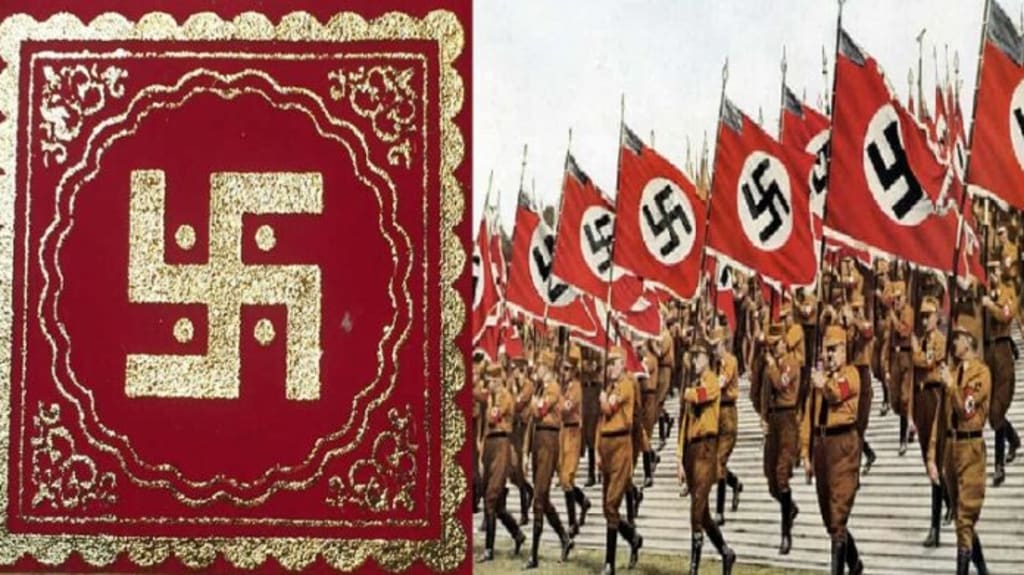Biggest betrayal of 20th Century
Hitler's symbol is not a swastika

Understanding the Swastika Symbol and Its History
The swastika is a symbol that has different meanings to various parts of the world. For many people, especially in the western hemisphere, it represents evil and is associated with Hitler's genocidal policies against Jews during the Second World War. However, there are other parts of the world where this symbol is considered sacred and denotes peace.
In this article, we will delve into the origins of the swastika symbol and how it became associated with evil. We will also look at its historical significance and the controversies surrounding it.
The Swastika Symbol and Hitler's Persecution of Jews
Despite the swastika symbol being an ancient Indian symbol of peace, Hitler chose to use it as the emblem of his Nazi party, which resulted in its association with evil. His persecution of 6 million Jews and other minority groups, who he deemed inferior to the "Aryan race," was carried out under this symbol, which is why it is difficult to dissociate it from the atrocities committed.
It is worth noting, however, that Hitler never used the word "swastika" in any of his recorded speeches or writings. Instead, he used the German term "Hakenkreuz," which translates to "hooked cross."
Understanding Hitler's Views on Race and Ethnicity
Hitler's persecution of Jews and other minority groups was largely motivated by his belief that the so-called "Aryan race" was superior to others. He believed that the Nordic race had the right to rule the world and that his foreign policy should reflect this.
However, to truly understand Hitler's views on race and ethnicity, one has to read his book "Mein Kampf," which contains all of his speeches and writings. While it is difficult to comprehend the depravity of Hitler's thoughts, due to their inherently evil nature, it is important to study them to avoid making the same mistakes in the future.
The History of the Swastika Symbol
Contrary to popular belief, the swastika symbol has a history that predates Hitler's use of it. In fact, it was considered a sacred symbol in India for centuries and was associated with peace, good luck, and prosperity.
The symbol was also used in other parts of the world, such as ancient Troy in Greece, where archeologists discovered remains with the symbol inscribed on them. Furthermore, it was used by the Finnish air force and was called "Hakaristi," which translates to "hooked cross" in German.
It was not until the swastika symbol was adopted by Hitler that its association with evil became known worldwide. It is important to note, however, that the original name for the symbol was opposed by archeologist Heinrich Schliemann in his book "Ilios: The City and Country of the Trojans," published in 1880. In his book, he used the word "swastika" for the symbol, which later became the standard name for it.
Despite the efforts of certain groups to "reclaim" the swastika symbol and divest it of its association with evil, it remains forever tainted by the atrocities committed under its banner.
The Indian Swastika and Hitler's Hakenkreuz
The swastika, a symbol originally from India, became infamous in the 20th century as the emblem of the Nazi party in Germany. The question of how and why Hitler chose this symbol is a subject of debate among historians. Some argue that Hitler was inspired by seeing the swastika as a child, while others suggest that his fascination with Christianity and his desire to be a priest may have played a role in his choice of symbol.
The Origin of the Swastika
The swastika has a long history in India and has been used for thousands of years as a symbol of good luck and prosperity. It was also used by early Christian societies to avoid persecution, as the use of the simple cross could invite riots.
Hitler's Connection to Christianity
Some historians argue that Hitler's fascination with Christianity played a role in his choice of symbol. In some of his speeches, Hitler referred to his struggle against the Jews as fulfilling the unfinished work of Christ. He also described Jesus himself as a German.
The Hakenkreuz
The Hakenkreuz, which was the symbol of the Nazi party, is not the same as the swastika, although the two have been confused due to their similar appearance. The Hakenkreuz was used as a symbol of struggle against Jews, Marxists, and Bolsheviks.
The Importance of the Gammadion
The gammadion, a symbol similar to the swastika, was used as a cornerstone in many buildings and was also used as a symbol of Jesus Christ in the Bible. This symbol has been an important part of Christian history and was used by early Christian societies to avoid persecution.
About the Creator
Enjoyed the story? Support the Creator.
Subscribe for free to receive all their stories in your feed. You could also pledge your support or give them a one-off tip, letting them know you appreciate their work.






Comments
There are no comments for this story
Be the first to respond and start the conversation.